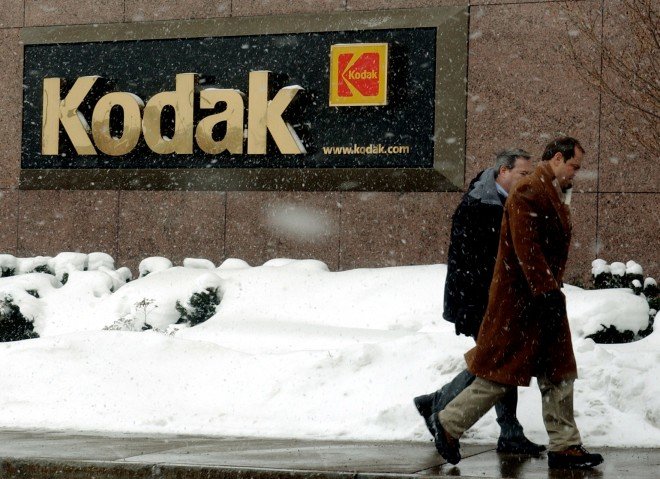
Can you imagine a world that does not have a mobile phone? Or where the internet doesn’t exist? And yet it is only 8 years since the first iPhone, while Google has only been listed for ten years. The cover story of German magazine Der Spiegel this week is entitled “How Silicon Value Shapes Our Future” and it reminds us of how far we have come, and how quickly. Like noting that a micro-processor from 2014 is 32 million times as powerful as the first Intel chip from 1971. “The growth of new technologies, after all, has been exponential rather than linear, with ever larger advances coming at an increasingly rapid rate. It is like a gigantic avalanche that begins as a tiny snowball. Driverless cars were considered to be a crazy fantasy not long ago, but today nobody is particularly amazed by them. All the world’s (geographical) knowledge condensed into a digital map and easily accessible? Normal. The fact that algorithms in the US control some 70 percent of all trading on the stock market? Crazy, to be sure. But normal craziness.”
Ray Kurzweil, an official genius working for Google, explains the change with the following example: If you take 30 linear steps, you travel 30 metres. If you take 30 steps exponentially, you travel a billion metres.
In a business sense, there is no going back from here.
There are a number of powerful reasons investors should pay close attention to the disruptors – aside from the fact that it is possible to make staggering sums of money in their shares. In the first instance, before any decision to invest in them, their presence is felt acutely in the underperformance of the companies previously not considered vulnerable to attack. I am talking not about the disruptors, but the disrupted.
For example how, it could have been asked a few years ago how it could be that an on-line retailer, offering only a picture of product, could win against the physical experience of buying (and taking home) the actual product from a real shop?
It turns out that there are so many ways that the on-line experience can be superior (price, convenience, parking, stock levels) that it works. Thus is it turned out that the on-line world had a very significant role to play in the physical world, with the stock prices of those disrupted companies underperforming as the upstarts gained strength.
Ask David Jones. Or Myer.
The rivers of gold in newspaper classified advertising haven’t dried up – they were redirected to pass the new, faster growing towns of Craigslist and Google, the residents of which are now drinking deeply. But Fairfax was already turning into a ghost town a long time before then, when Seek was still a village by the stream.
Here is a good time to consider whether bank stockprices, which are spectacular, could one day be under threat from the peer-to-peer lending businesses like Society One, or in the US, Lending Club?
Or to note that Telstra has been forced to change its very business model, and most of its assets, as a result of disruption, and the company’s share price suffered for years as a result of this. Investors, and users, may have had the view that the telephone isn’t going away, making Telstra a great investment, but that description was plainly wrong. (Telstra’s share price finally got its mojo back, but mostly as a result of disrupting its own business model). Meanwhile, the phone, and the phone line, have become so much more – the old business model just seems to be an anachronism and the possibilities of the phone have been realised so much more fully through Apple and Samsung.
Tesla, as we have noted here in the past, is valued at just on half of General Motors.
Investors may consider it risky to invest in disruption. It is significantly more risky to invest in companies that are attempting to build moats around themselves to keep the disruptors at bay. And as for investing in the disruptors, it has clearly turned out that many (though not all) of their business models were absolutely right.
At this point, there is a new important question. Self-managed super is there to provide in retirement. All SMSF’s by definition have a long tail liability (it’s us). And every student of finance knows that those liabilities must be matched off with long tail assets. Because the liability will be there (if we are) irrespective of whether the asset performs. Which is a fancy finance way of saying invest wisely – your retirement depends upon it.
But are Australians investing wisely? SMSF’s hold 30.3% of their total assets in listed shares, according to tax office data released for the 2013 year. This amounted to A$150b. There was virtually the same amount in cash. In overseas shares, there was A$1.9b, or just 0.39% of the total SMSF pool. Anecdotally, most SMSF’s have lots of banks, and Telstra and Woolworths. It goes without saying that the official data clearly show that the vast bulk of self-managed super funds are virtually un-invested the companies which are remaking global businesses before our very eyes.
From a risk perspective, this is extremely unwise, for the reasons already outlined above.
What to do about this? Diversify. But the way to diversify is not to buy technology, which is a single sector bet.
The key to diversification is buying great businesses, across different sectors. That these businesses utilise technology is interesting, but not the point. Technology, by itself, may help productivity (in business) or fun (Uber late on Saturday night) but way more important, it’s the disruptive business model which has created the wealth. Disruption uses technology, because it makes for a better business. But truly disruptive businesses have no use for useless technology.
Apple isn’t successful because it is a technology play – it’s because there is no better consumer products company in the world. Google has effectively eaten the capitalisation of most of the newspaper companies in the world because of its command of advertising. Buying Illumina is sensible because the $1000 genome map for patients is just around the corner.
Own Amazon because it is a retailer, with a very big, spin-off business in cloud computing, but not because it is a technology play. Own Alibaba because China is a growth beast, and the company is simply a better way to transact for the millions of buyers and sellers who are infrastructure poor. Another retailer in a fast-growing market.
There is one more reason, a hidden one. A significant chunk of the long tail of our liabilities is denominated in currencies outside the Australian dollar. We buy our cars and our holidays from offshore, quite a lot of our clothes, our food and yes, technology. So when the A$ falls, the affordability of these items falls. Just as diversifying out of Australian stocks may be sensible, it almost makes sense as a currency diversification, to guard against cost of living pressures which built up when the Australian dollar is low.
Other posts you may like
E&P’s Words on Wealth Podcast interviews Alex Pollak and Raymond Tong on ‘AI’s Expanding Reach’
26 Jun 2025‘Beating the market in a time of hyper-disruption’: Alex Pollak features on EquityMates Basis Points
25 Jun 2025Share this Post


